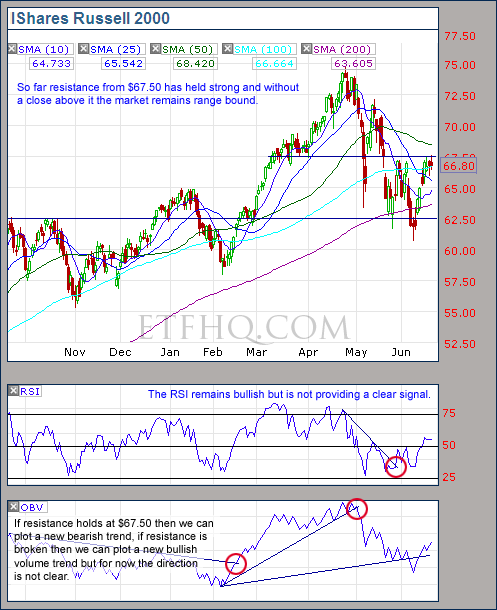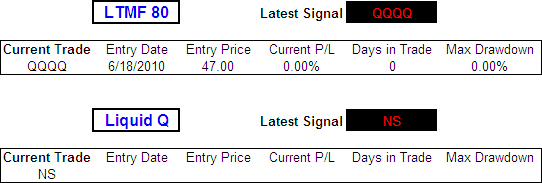August 23, 2010 – 12:58 am EDT
We saw a mild bounce over the last week which wasn’t surprising after such a strong sell off. But the market encountered resistance and ended the week poorly. The question now is; will we see new lows?
****A big welcome to all our new subscribers over the last week and thanks to everyone for spreading the word. The more readers we have the more resources we can put into this service. Please direct people to http://etfhq.com to subscribe.
.
ETF % Change Comparison
.

Those hardest hit in the recent declines saw the most upside over the last week but SMH and IWM still lead the declines over the last fortnight and since the last major peak.
Learn more – ETF % Change Comparison
.
![]()
.
A Look at the Charts
.
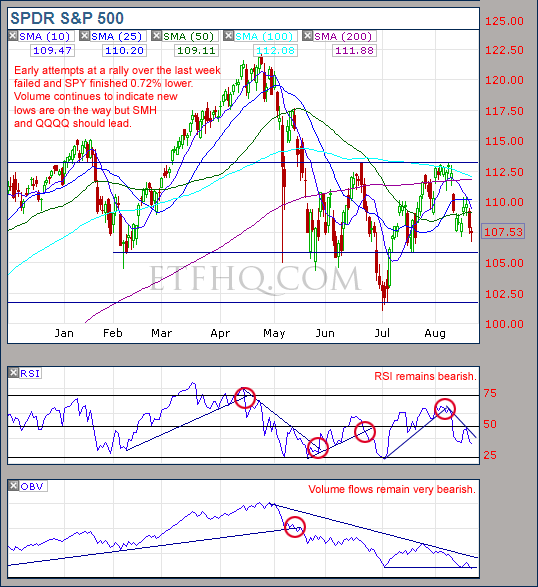
Volume on SPY is comparatively bearish but if we are too see new lows and continue lower then SMH and QQQQ should lead the way first. SPY is currently 5.22% above its lowest close in July.
.
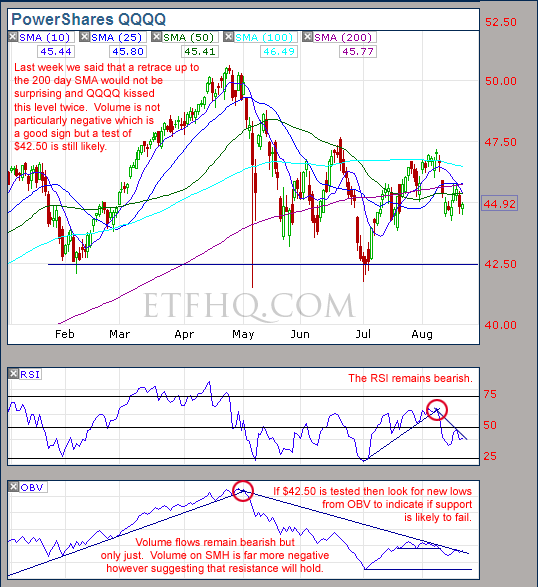
Volume flows on QQQQ have been much better than those seen on SMH and SPY but there are multiple levels of strong overhead resistance.
.
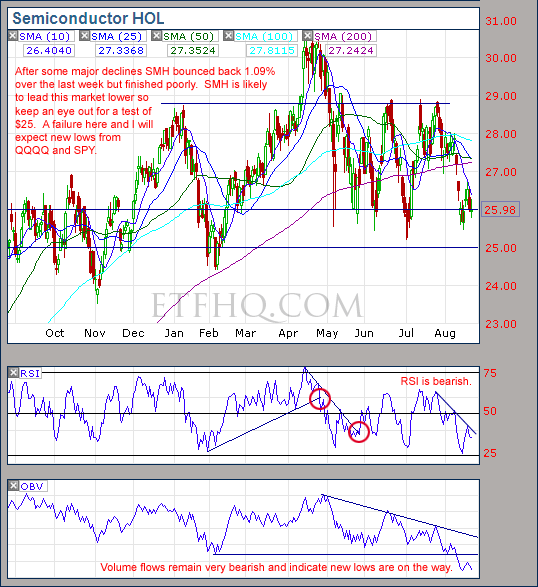
SMH is only 1.44% off its closing low in July and volume flows are very negative. If SMH breaks down to new lows then expect the broad market to follow.
.

IWM is 3.57% off its closing low in July and is likely to test that level this coming week.
.
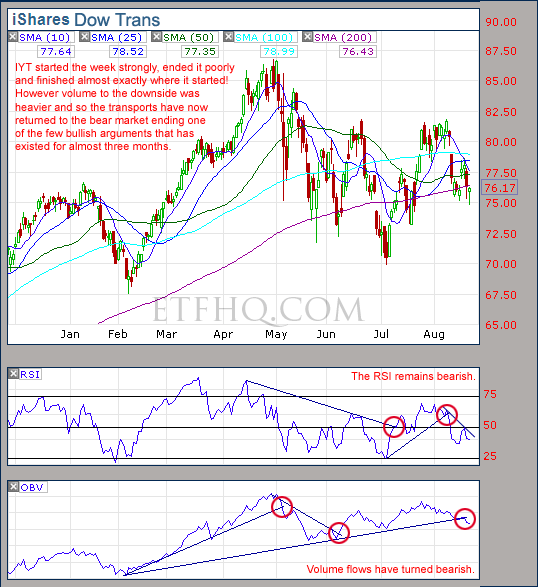
Volume flows on IYT have turned bearish again indicating that we are no longer range bound but have returned to the bear market.
.
![]()
.
OM3 Weekly Indicator
.

No strong trend from the OM3 indicator but the second week of ‘Bear Alerts’ tells that the weekly cycle continues to turn down.
Learn more – The OM3 Indicator
.
![]()
TransDow & NasDow
.

There is no clearly dominant index between the NASDAQ and the Dow while the Dow remains dominant over the Transports. Historically the market has been very unproductive under these conditions.
.
What the TransDow Readings tell us:
The TransDow measures dominance between the DJ Transportation Index (DJTI) and the Dow Jones Industrial Average (DJIA). In a strong market the more economically sensitive Transportation Index should be dominant over the DJIA.
Historically the DJTI has been dominant over the Dow 45% of the time. The annualized rate of return from the DJTI during this period was 18.47% with the biggest loss for one trade sitting at -13.27%. The annualized return from the DJIA during the periods it was dominant over the DJTI was just 4.06% and the biggest loss for one trade was -16.13%. A 4% stop-loss is applied to all trades adjusting positions only at the end of the week.
What the NasDow Readings tell us:
The NasDow measures dominance between the NASDAQ and the DJIA. Using the same theory behind the Trans Dow; in a strong market the more economically sensitive NASDAQ should be dominant over the DJIA.
Historically the NASDAQ has been dominant over the DJIA 44% of the time. Taking only the trades when the NASDAQ is above its 40 week moving average the annualized rate of return was 25.47% with the biggest loss for one trade sitting at –8.59%. The annualized rate on the DJIA during the periods it was dominant over the NASDAQ is just 8.88% and the biggest loss for one trade was –12.28%. A 8% stop-loss is applied to all trades adjusting positions only at the end of the week.
.
![]()
.
LTMF 80 & Liquid Q
.

Both LTMF 80 and Liquid Q remain in cash.
.
Historical Stats:
.

.
How The LTMF 80 Works
LTMF stands for Long Term Market Forecaster. It reads volume flows relative to price action and looks for out performance of volume measured on a percentage basis over the prior 12 months. During a sustained rally the readings will reach high levels (near 100%) making it imposable for the volume reading to always outperform price so any reading above 80% will maintain the buy signal. This system has outperformed the market over the last 10 years but performance has been damaged by some nasty losses. It only produces buy signals and only for QQQQ.
How Liquid Q Works
Liquid Q completely ignores price action and instead measures the relative flow of money between a selection of economically sensitive and comparatively stable ares of the market. It looks for times when the smart money is confident and and can be seen by through volume investing heavily is more risky areas due to an expectation of expansion. This system has outperformed the market over the last 10 years and remained in cash through most of the major declines. It only produces buy signals and only for QQQQ. We will provide more performance details on the web site for these systems soon.
.
![]()
.
Summary
For the bullish argument; volume on QQQQ has been comparatively good and it wouldn’t take much for volume flows on QQQQ and IWM to turn bullish. However even if this occurs then decent advances are unlikely due to strong resistance overhead.
For the bearish argument; the market is no longer oversold, OBV on the Transports has turned bearish and volume in most areas has been under performing price. Tests of the June lows are highly likely and there is plenty of evidence to suggest that new lows are on the way. Keep an eye on SMH and IWM because they should be the first ones to test the lows and if support fails then it will most likely fail on the broad market as well.
.
Any disputes, questions, queries, comments or theories are most welcome in the comments section below.
.
Cheers
Derry
And the Team @ ETF HQ
“Equipping you to win on Wall St so that you can reach your financial goals.”
.
P.S Like ETFHQ on Facebook – HERE
.
![]()
.
Quote of the Day:
“The market does reflect the available information, as the professors tell us. But just as the funhouse mirrors don’t always accurately reflect your weight, the markets don’t always accurately reflect that information. Usually they are too pessimistic when it’s bad, and too optimistic when it’s good.” – Bill Miller

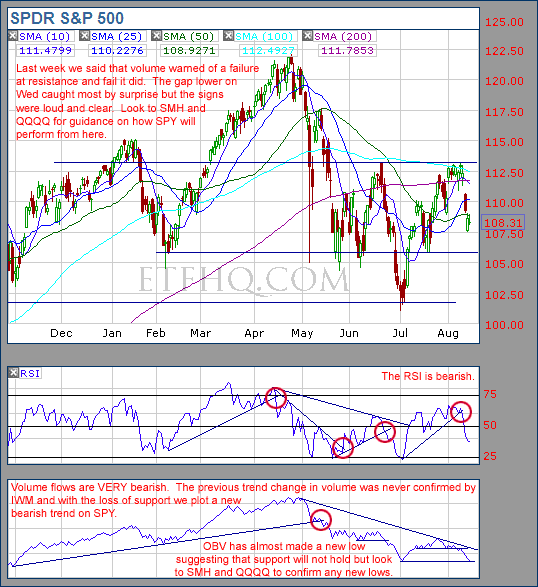
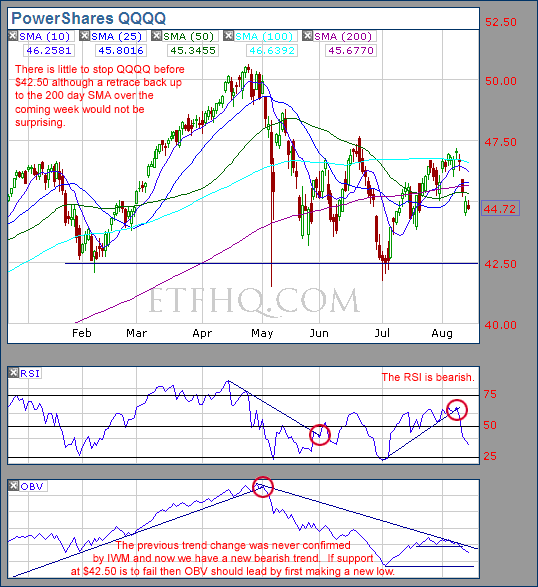
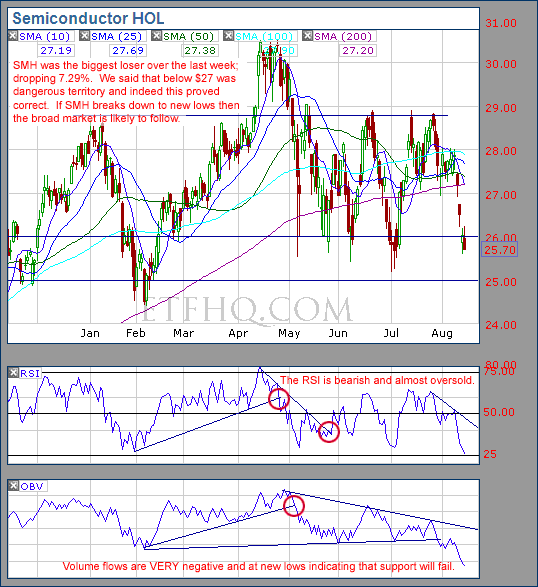
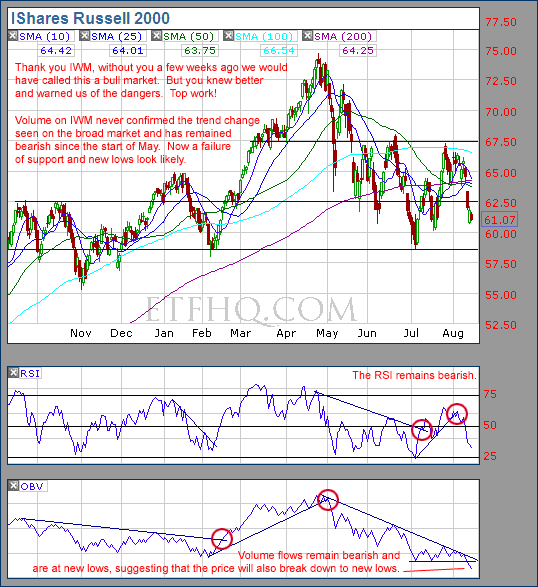
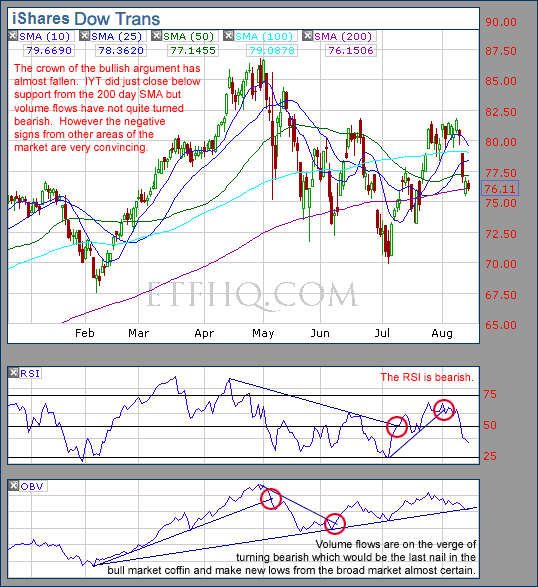



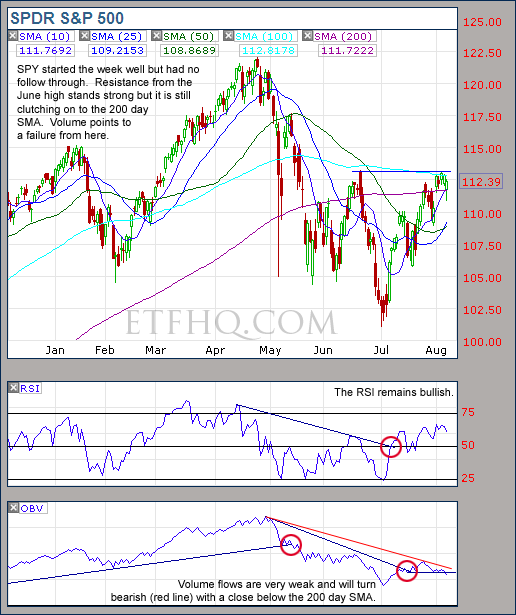
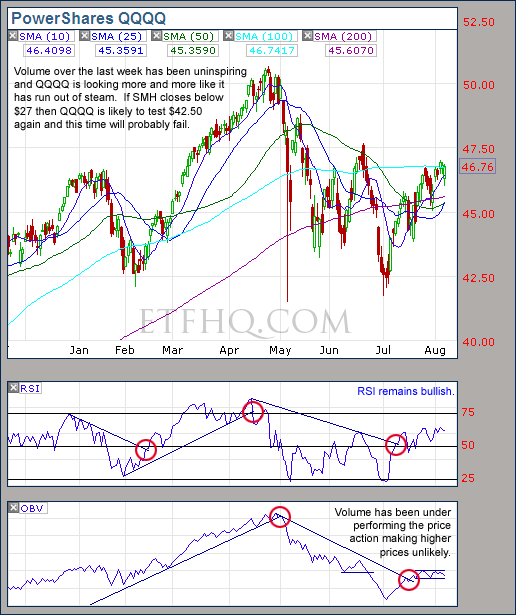
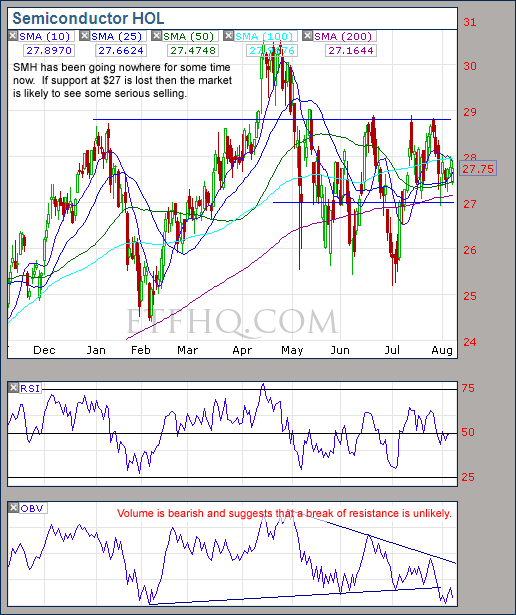
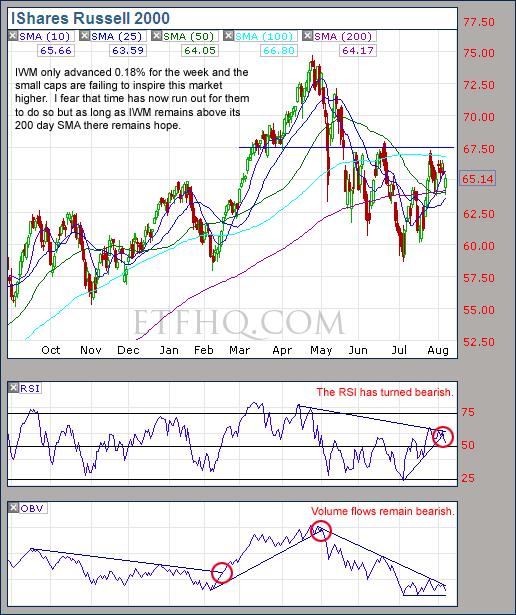
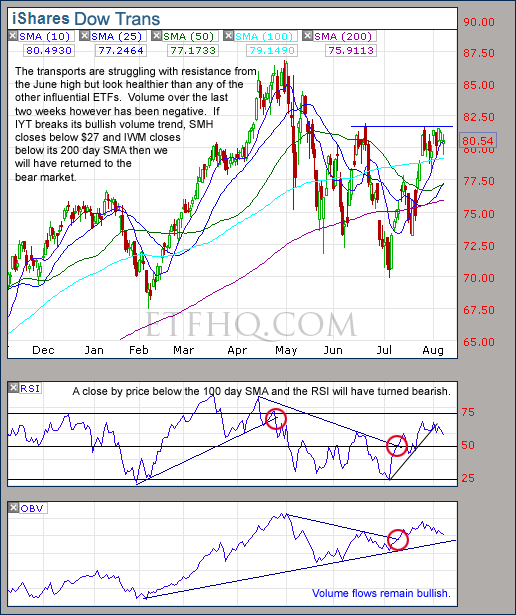



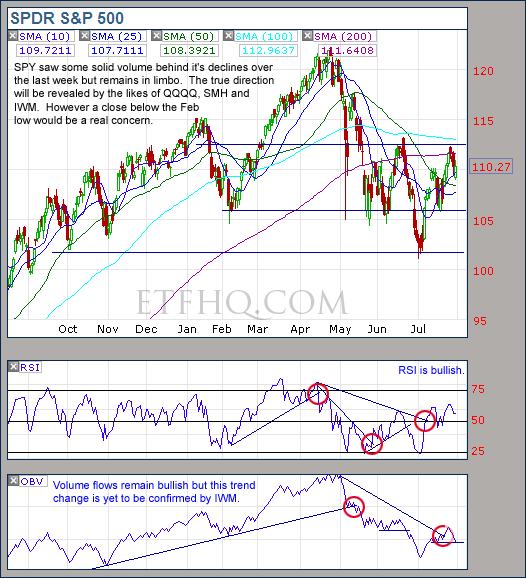
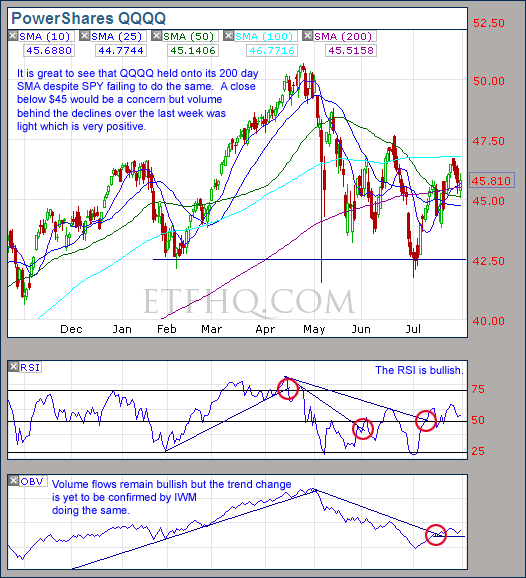
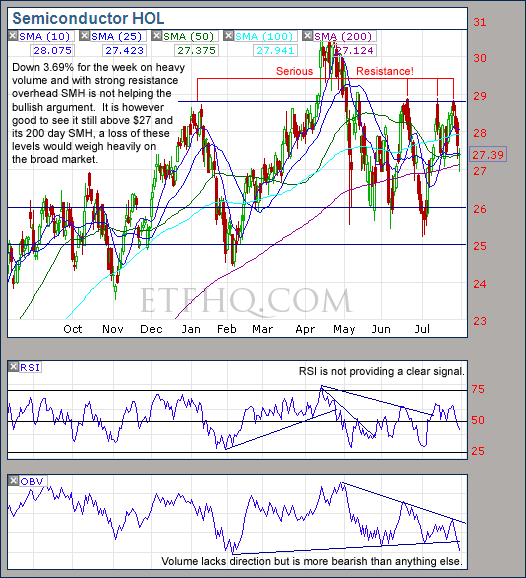
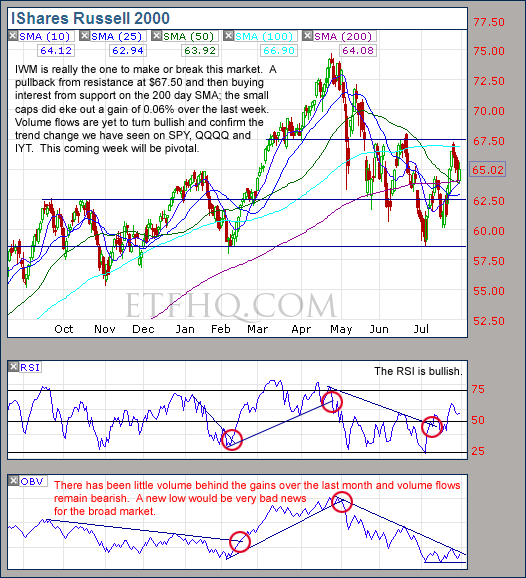
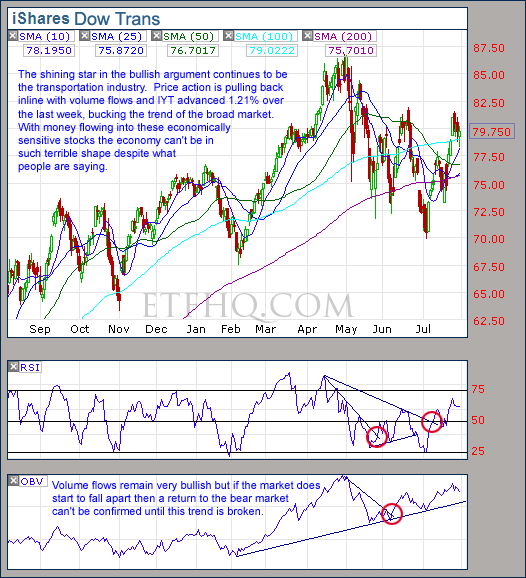



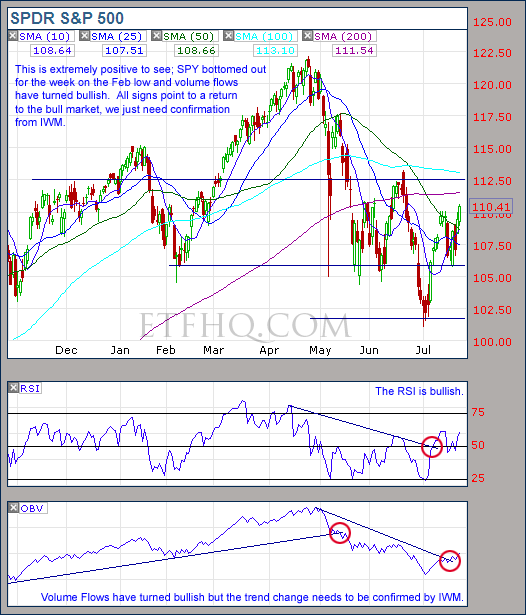
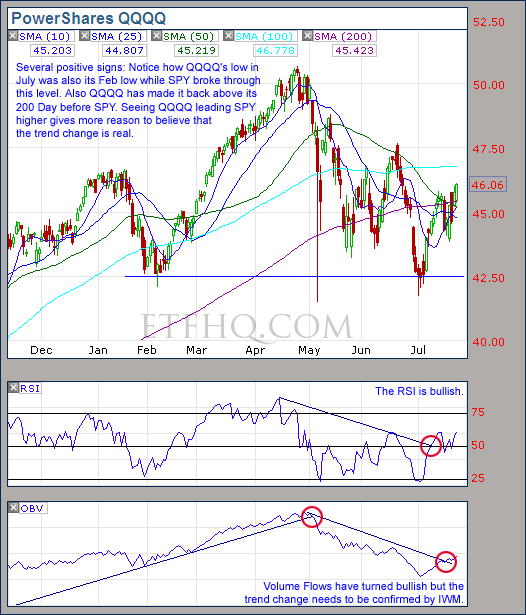
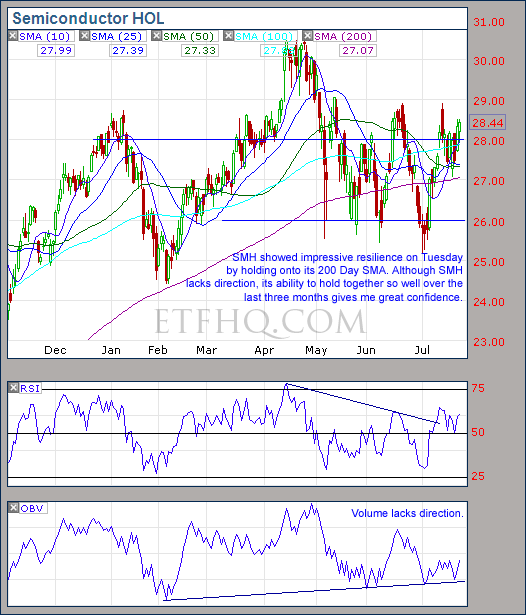
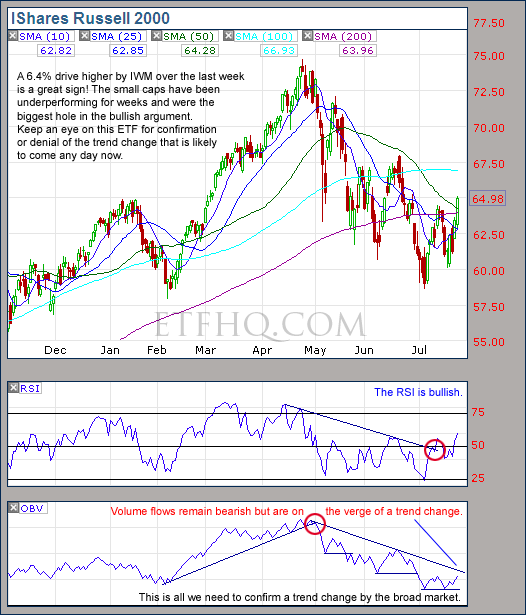
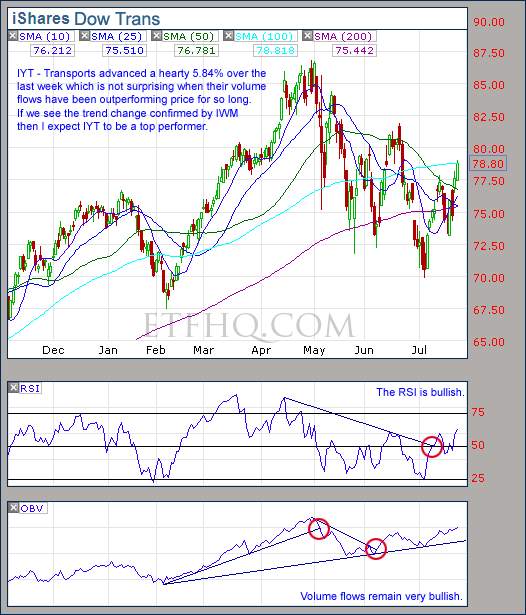





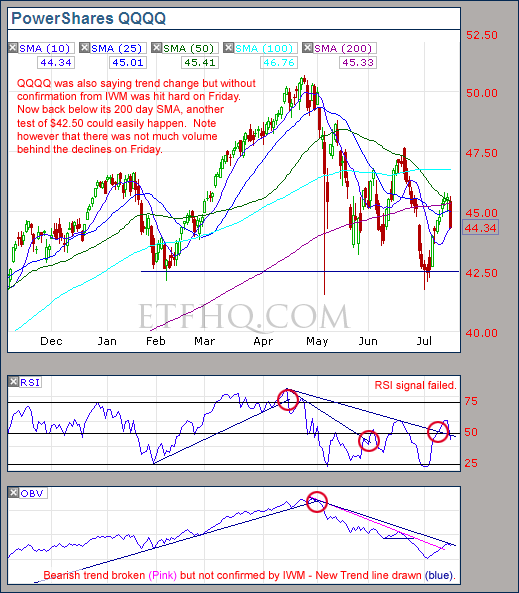
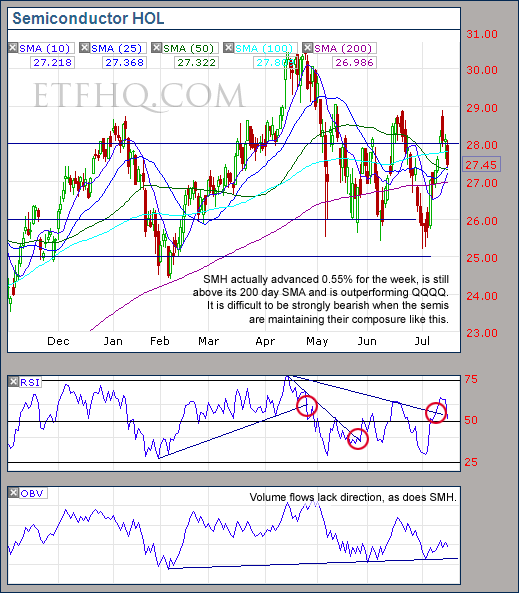
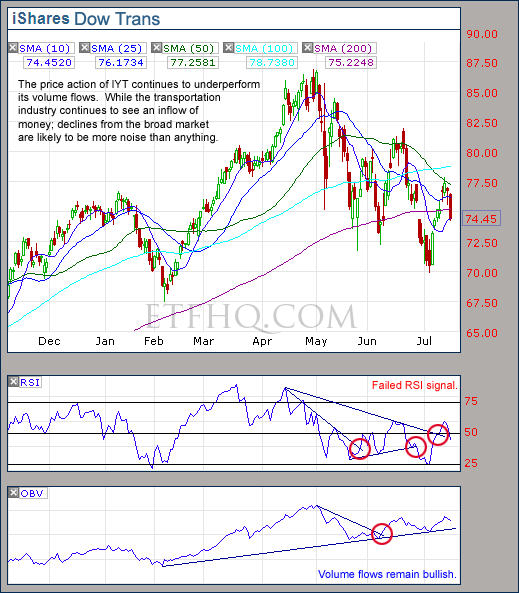



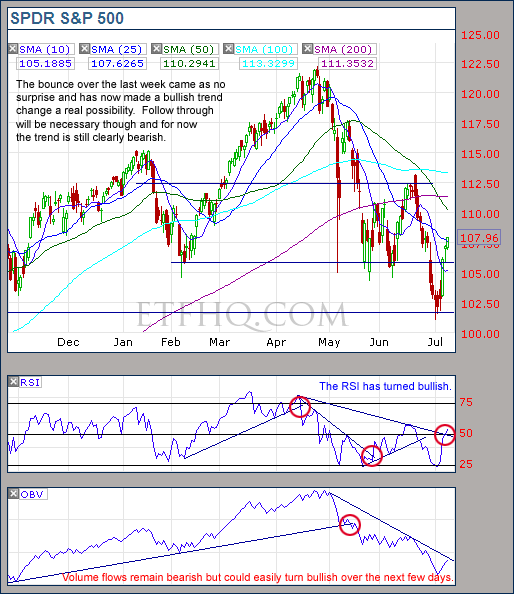
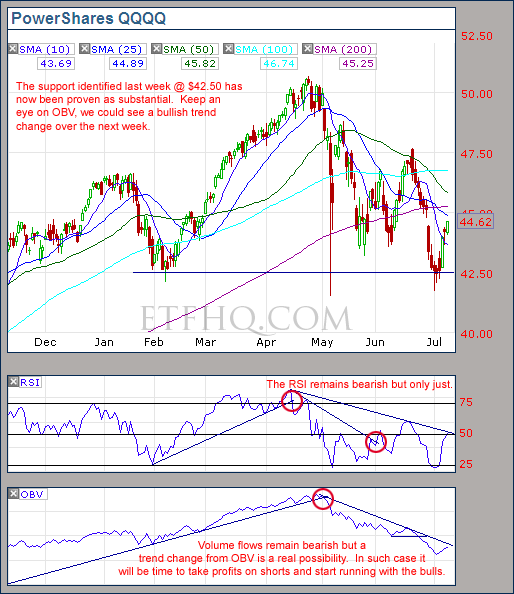
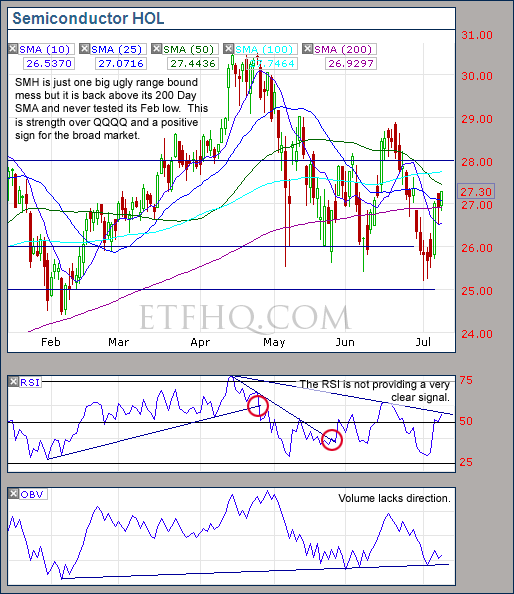
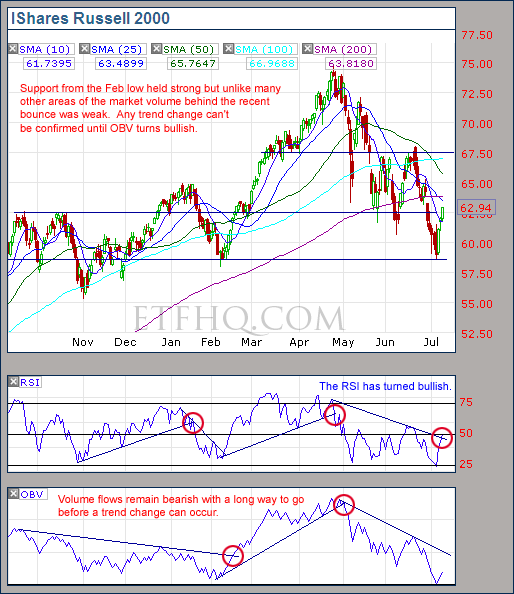
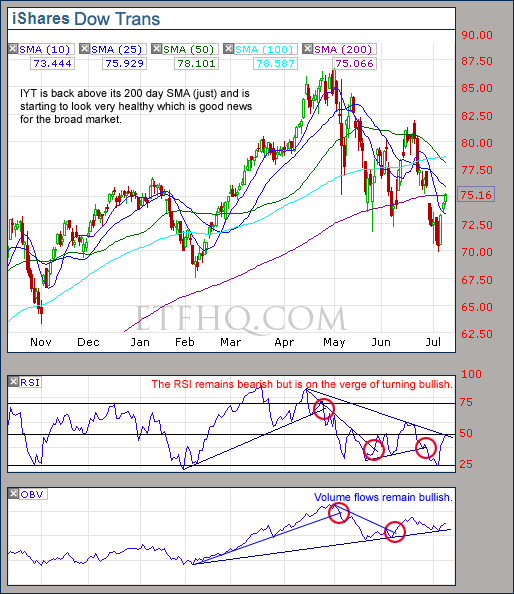



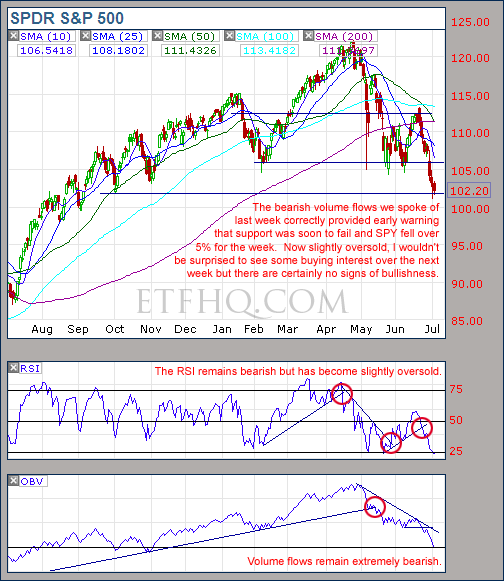
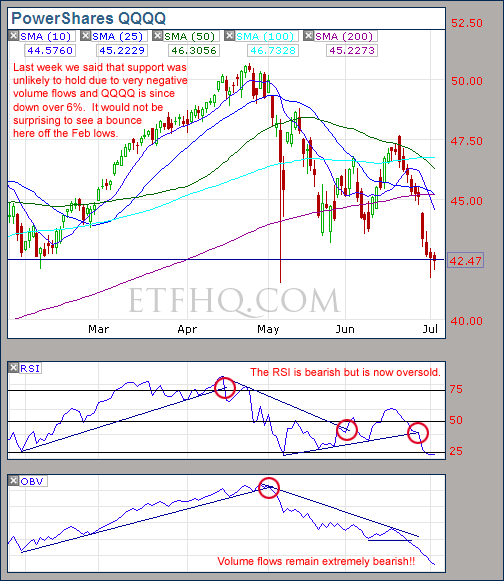


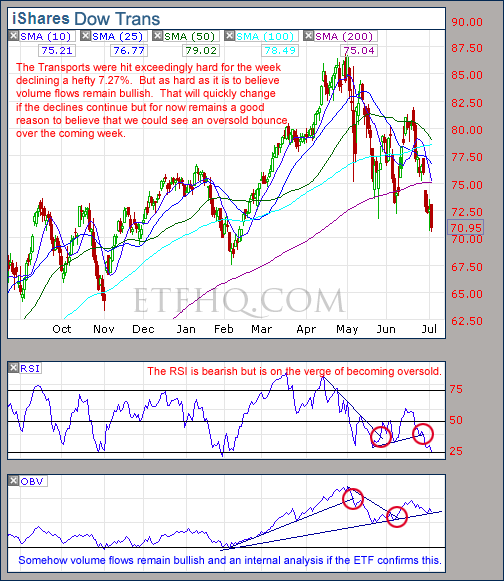



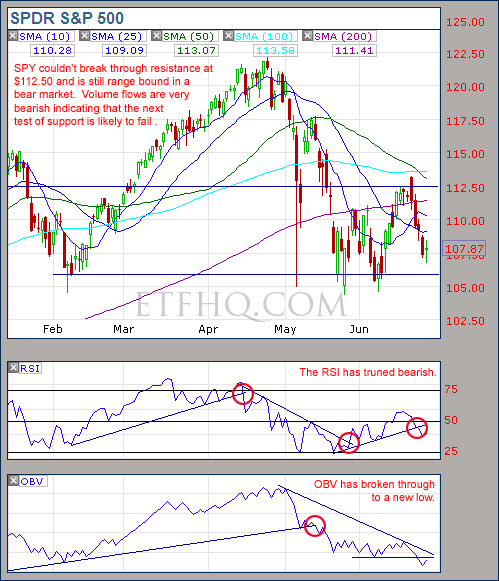
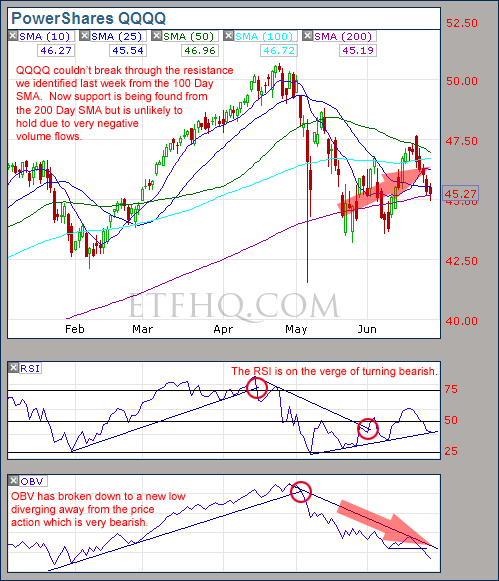
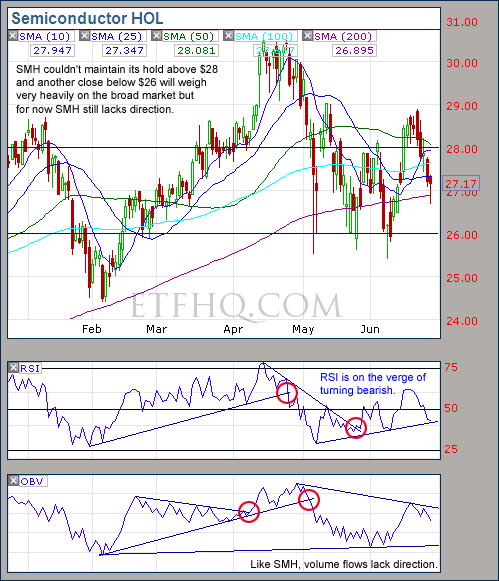
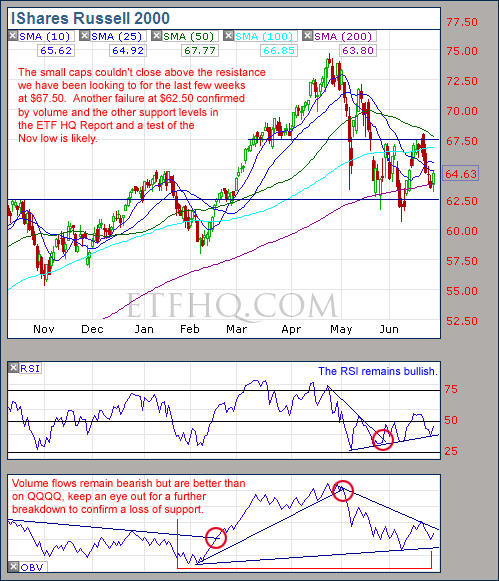



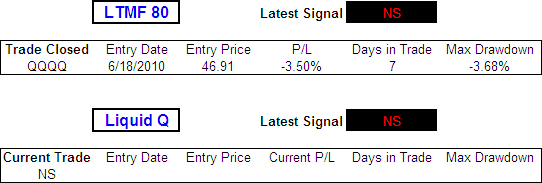

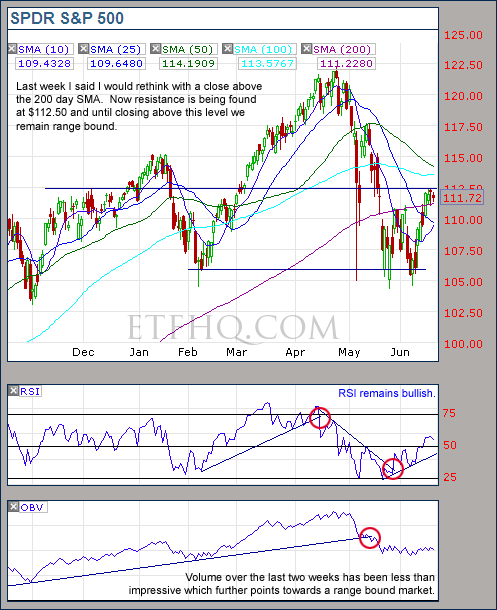
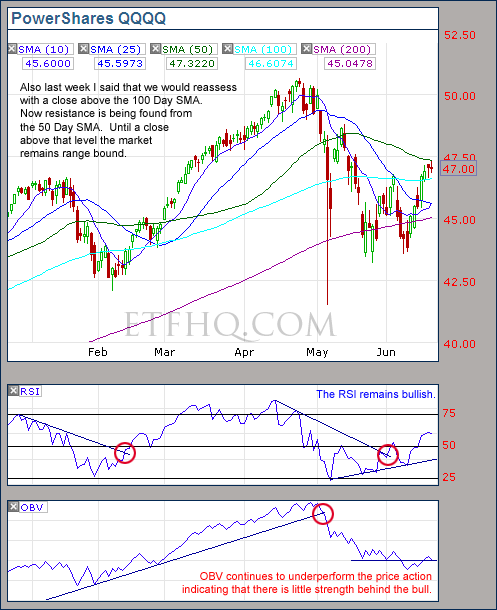
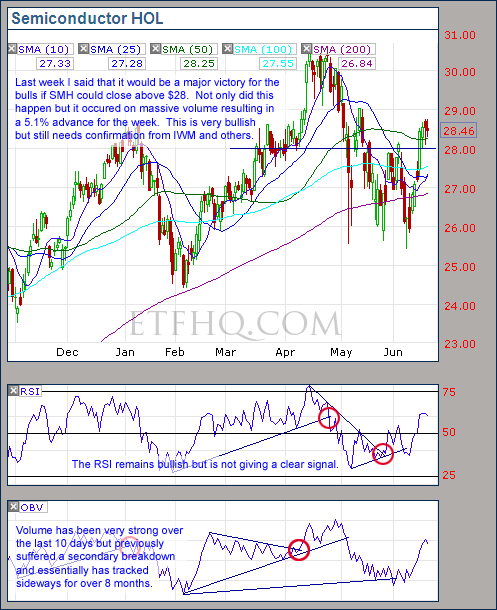 .
.